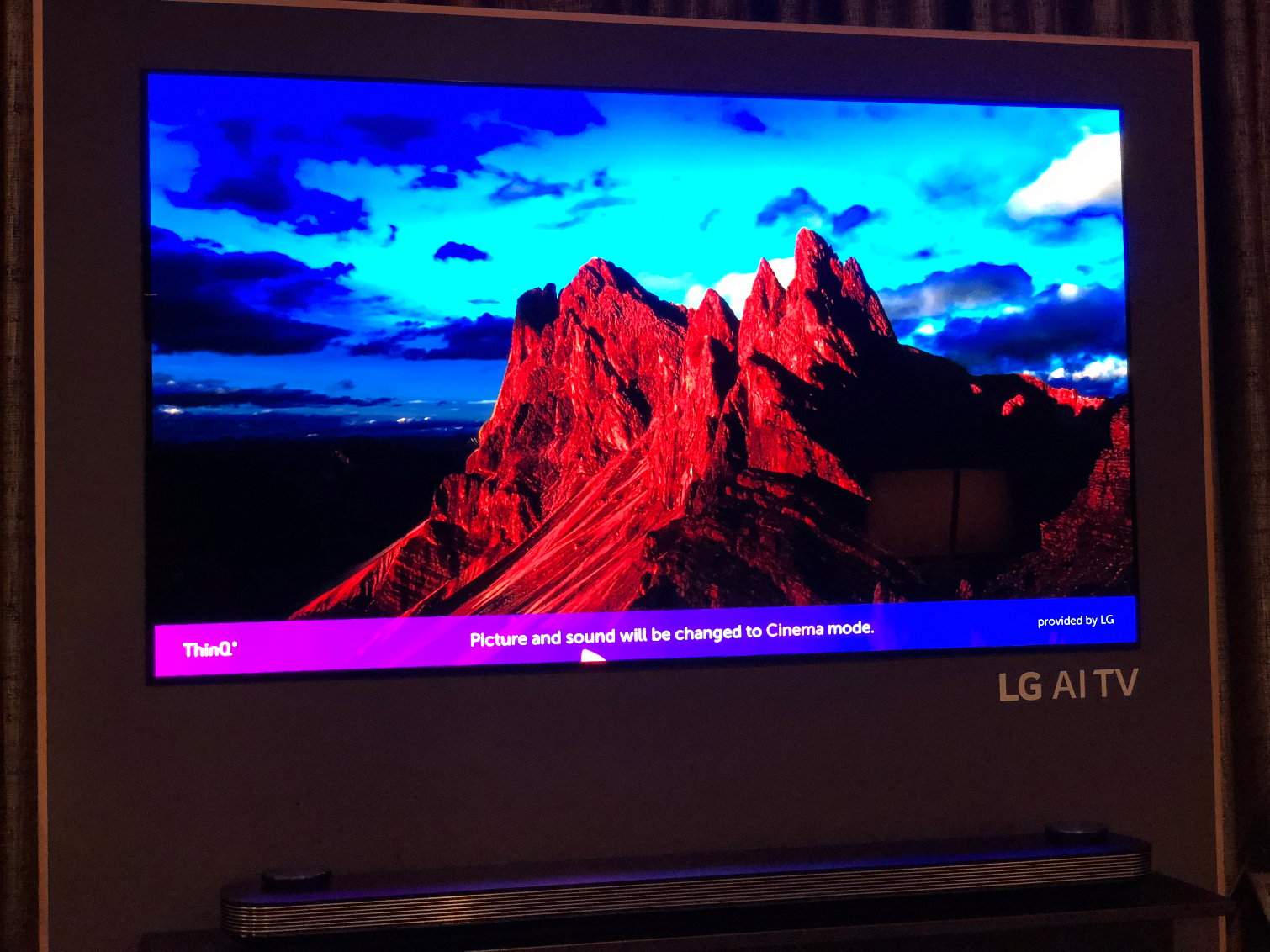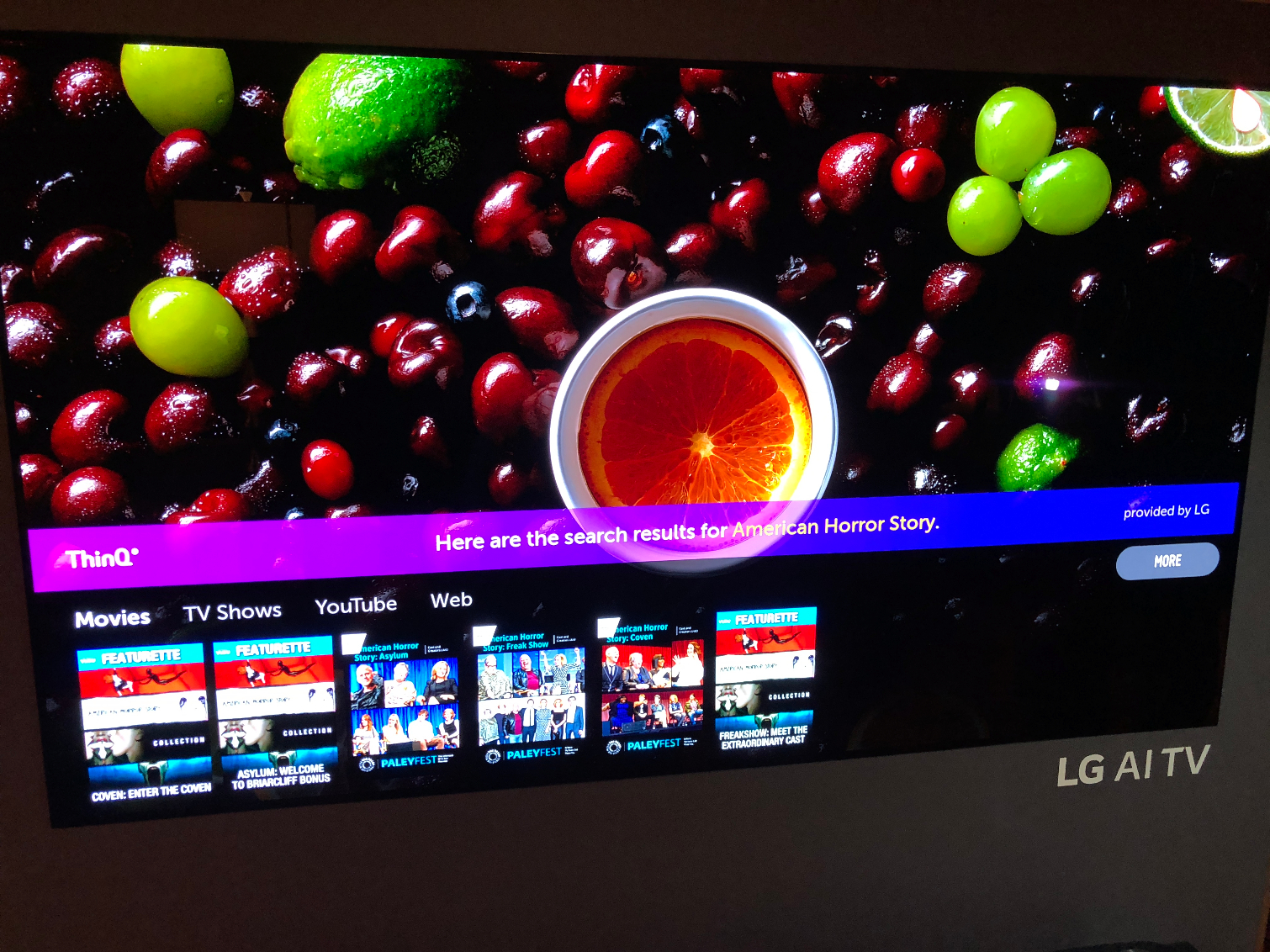Trying Out LG’s AI-Powered Smart TVs
Soon, you’ll be able to Netflix and Chill with Google Assistant as expanded smarts come to LG’s entire lineup of 4K TVs.

LG’s smart TVs will be smarter than ever in 2018. While many of the new 4K Smart TVs coming from the manufacturer will closely resemble past sets on the outside, the biggest difference is within, with LG’s new ThinQ AI. The new technology uses LG's own entertainment-specific voice search and blends it with Google Assistant to create a smarter Smart TV.
In a demonstration with LG we saw the new assistant in use on the upcoming LG Signature W8 OLED. We got a taste of what the technology will offer with a range of commands, starting with simple search across streaming media, requests for weather information, and even more advanced queries.
Listens Well
Some of these were far more sophisticated than past smart TV voice search tools have allowed for, like searching for directions using Google Maps, or searching across your photo collection in Google Photos with specific content, searching for “vacation photos” or “vacation photos in a city” for more specific results.
The finer touches are where this newfound intelligence really shines. One aspect sure to be appreciated is continuity between questions. For example I can ask what the weather will be on Tuesday, and I can then ask “What will it be on Friday?” and I can expect it to understand that I am again asking about the weather without stating so out right.
It's also content-aware meaning that as I watch a movie I can ask a question such as “What actors are in this?” and it will pull up a cast list for the movie I am watching at the time. This sort of deeper understanding lets you ask questions in context, and then ask follow-up questions for better results.

Credit: Mark Spoonauer
While some functions will be familiar to anyone who has used Google Home or Amazon Alexa, many of these features are new to TVs. Using the existing TV voice search technology also means that you can enjoy the benefits of an AI assistant without the drawbacks. Unlike a smart speaker, which always listens and is triggered by a specific phrase, LG's smart TVs have a microphone button on the remote which must be pressed for voice interaction.
This does two things: First, it provide some peace of mind as to whether or not your technology is listening to you when not in use. Second, it means that you won't have to use a trigger phrase such as “OK Google” because the TV knows to listen when the microphone is active. LG has put a great deal of time and energy into making sure that the voice assistant can differentiate between TV-related searches and Google Assistant queries without the need to ask for Google.
Looks Good
In addition to the voice enabled smart's, the on-screen presentation of information is also quite nice. As you speak your question, the voice recognition puts the text on the TV so that you can visually confirm that the correct question is being asked. While we had no problems with the voice recognition during our demo, this will definitely come in handy when using terms that could be easily mistaken, like homonyms or other confusing phrases.

Credit: Mark Spoonauer
The presented information is elegantly displayed, showing up along the bottom third of the screen, with minimal disruption of the content you’re watching. Whether you're asking about the weather or searching for new movies, you can do it without interrupting your show.
Get instant access to breaking news, the hottest reviews, great deals and helpful tips.
Beyond Media
Other added smarts that come with the ThinQ AI include Google Home actions that reach beyond the TV and media sphere. For example you can order a pizza or request a ride from Uber from the comfort of your couch, just as you can with Google Home.
It also offers smart home integration. It should play nicely with most connected home Technologies, above and beyond those offered by LG and Google. All the list of applications will certainly expand overtime, you be able to do such things as adjust the lighting through smart bulbs, check the status of a load of laundry in a connected washing machine, and adjust the settings on your smart thermostat.
Pricing and Availability
LG's ThinQ voice assistant will be rolling out in all 2018 UHD TV sets, both OLED and LG’s Super UHD LCD displays. (One of the lower-end models will come without the voice-enabled remote, requiring a separate purchase for full voice interaction.)
LG expects the new 2018 sets to come available in April or May, but specifics on pricing for individual have not been made available yet.
First Impressions
While it may be tempting to write this off as a small, iterative improvement to existing voice search, the reality is that it is much more. The development of media-awareness and continuity from one question to the next will make using the voice features far more natural, and the answers provided will be significantly improved over past versions. That alone could be a game changer for voice search, taking it from a slightly gimmicky, rarely-used feature to making voice a central method of interacting with your TV.
The addition of Google Assistant and Google Home actions also means that the capabilities offered by the TV will expand and evolve over the next year or two. This should give LG’s smart TVs a sizable foothold within the smart-home space, and will supplant standalone devices (like the Google Home Mini) in many households.
Brian Westover is currently Lead Analyst, PCs and Hardware at PCMag. Until recently, however, he was Senior Editor at Tom's Guide, where he led the site's TV coverage for several years, reviewing scores of sets and writing about everything from 8K to HDR to HDMI 2.1. He also put his computing knowledge to good use by reviewing many PCs and Mac devices, and also led our router and home networking coverage. Prior to joining Tom's Guide, he wrote for TopTenReviews and PCMag.
-
IQ11110002 Last thing i want is a camera and microphone on my tv!Reply
People should boycott all of this type of technology before they completely lose all privacy.
Give me a dumb tv with the best picture quality and i will buy it.

